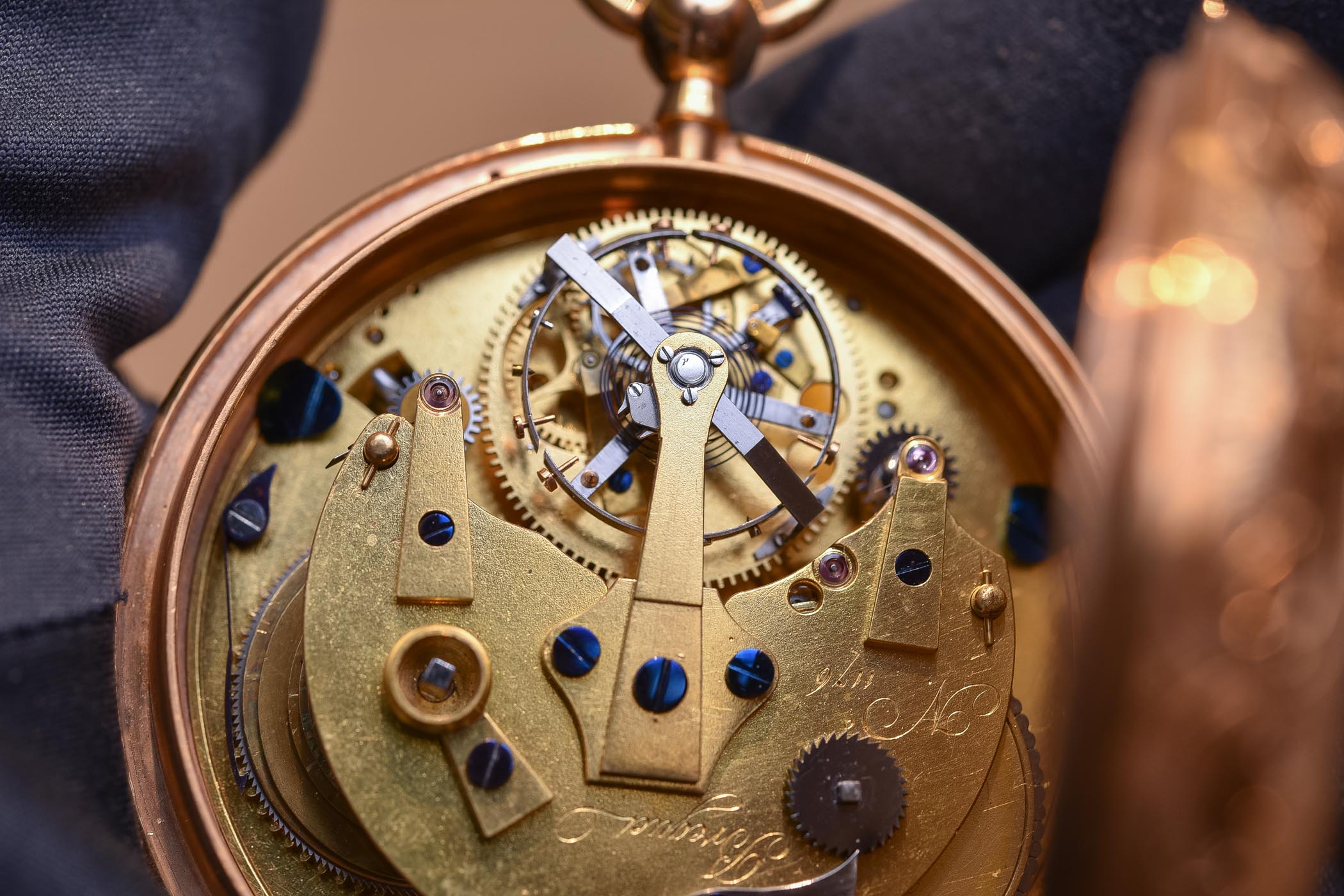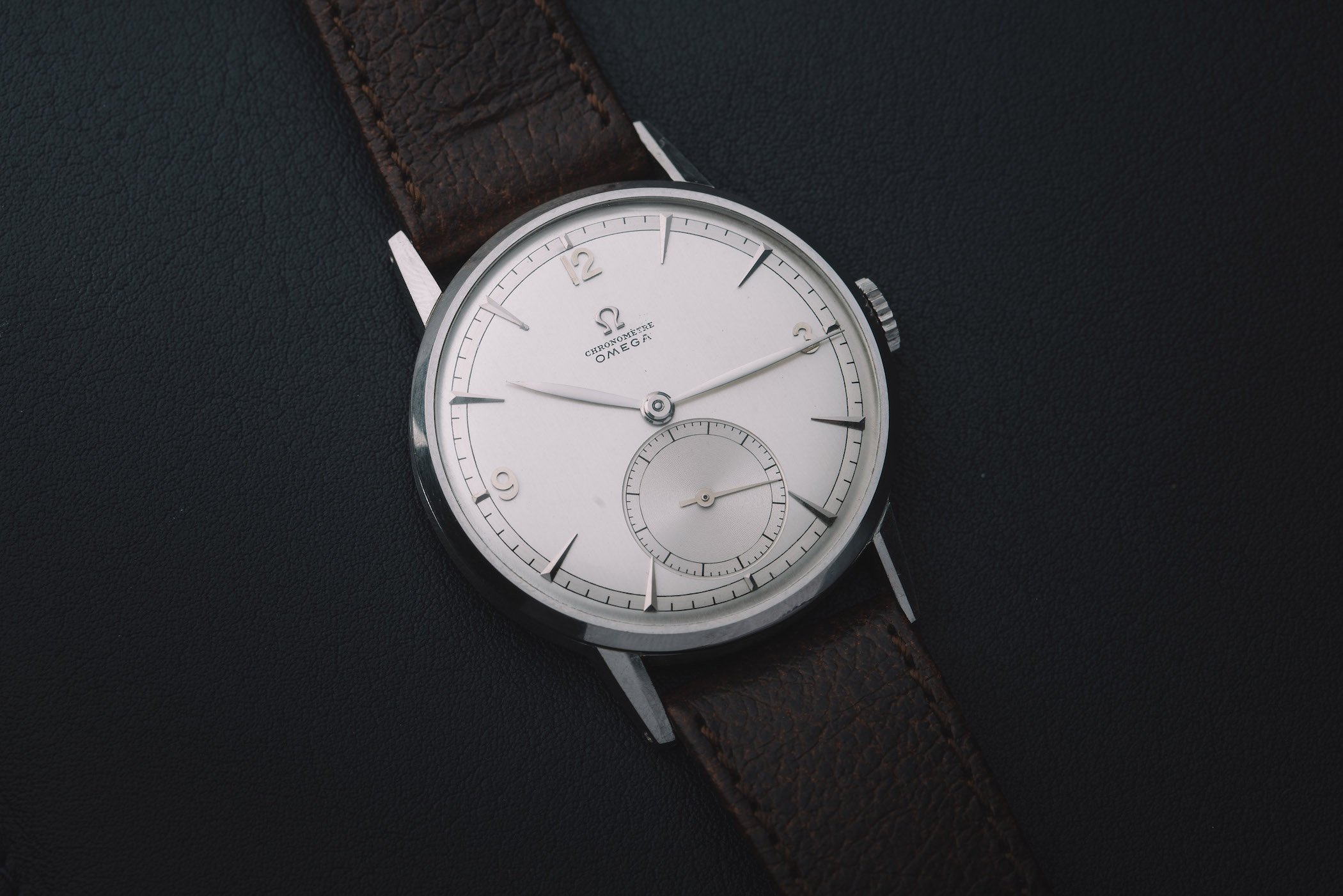Omega De Ville Tourbillon Master Chronometer
Omega's impressively technical tourbillon watch, with a stunning movement!

When you think Omega, you’ll probably have in mind iconic watches like the Speedmaster or the Seamaster – and rightfully so. You might think even about James Bond or the Olympic Games. All in all, you’ll often have technicality and sports in mind. Well, there’s more (much more) to Omega, including complications and chronometry. Remember that Omega had a massive influence on the modern tourbillon watch. And a month ago, the brand reminded that to us with a new model mixing proper watchmaking, innovation and, something that is quite new, an absolutely superb movement finished the Haute Horlogerie way. We couldn’t wait to see this new Omega De Ville Tourbillon Master Chronometer, and here it is.
Omega and the tourbillon
The tourbillon, this complex device that aims at counteracting the effect of gravity on the regulating organ by positioning it in a constantly rotating cage, was invented (or at least patented in 1801) by Abraham-Louis Breguet, one of the most important watchmakers of all times. Even though it was regarded as a very important innovation, Breguet’s invention soon fell into oblivion. Breguet himself only produced a limited amount of tourbillon watches. From 1860 onwards, with the development of chronometry and international watch fairs, the tourbillon emerged from this period of hibernation. Still, it remained an exercise of style often used for chronometry contests only. And the advent of the wristwatch didn’t help the popularity of this device.

The watch market had to wait until the mid-1980s and the comeback of mechanical watchmaking to see the tourbillon rise again. In 1984, Franck Muller produced a rare tourbillon wristwatch. In 1986, Audemars Piguet introduced the Ref. 25643, an Ultra Thin Automatic Tourbillon watch with the in-house calibre 2870 – which is the first-ever serially produced tourbillon watch. Soon the development of the tourbillon regulator became the must-have complication for any high-end Swiss watch brand.
There is, however, an intermediate step between Breguet’s pocket tourbillon watches and AP’s ultra-thin Ref. 25643. And it has to be credited to Omega. Research tells us that the first tourbillon wristwatches were apparently made by Lip, which created a rectangular tourbillon prototype in 1931/1932. However, Lip was not a Swiss company… and it was a prototype, so the first Swiss-made tourbillon wristwatch is, against all odds, not from one of the manufactures you would expect such as Patek, Vacheron, Audemars or Breguet. It actually is the result of the work of Omega…

In 1947, Omega produced just over a handful of hand-wound 30mm movements named 30 I, featuring a tourbillon regulator rotating every 7.5 minutes. These movements were created to participate in chronometry contests, to compete in the “wristwatch” category of the Geneva, Neuchâtel and Kew-Teddington Observatory trials (and they did well, as this movement is still, to date, the one that achieved the highest score for a wristwatch at the Geneva trial).

Fast forward to 1994, when Omega introduced its first serially produced tourbillon wristwatch, which coincidentally came with something unprecedented, a cage positioned in the middle of the watch, dial-side (calibre 1170). Back then, the movement was still hand-wound. In 1997, the brand improved its concept with automatic winding and in 2002, the movement obtained a chronometer certification. Finally, in 2007, the brand added its signature co-axial technology to the tourbillon.
The Omega De Ville Tourbillon Master Chronometer
This year, Omega once again improves its central tourbillon watch. Even though the U.S. patent for this specific layout (1995, patent US5608694A) expired in 2015 and is now used by other watchmakers (including Haldimann), this complication and its position on the dial remains deeply linked to Omega. In order to keep its supremacy on this specific tourbillon, the brand adds everything it has technically speaking to make this watch one of the most advanced tourbillons on the market: precision, materials, technical solutions, magnetic-resistance and certifications, it has it all.
And this new De Ville Tourbillon houses what’s certainly the most attractive movement ever made by Omega, alongside the recently revived calibre 321 – but in a different category. If we were expecting Omega to produced a Master Chronometer tourbillon, the big surprise here is the brand moving into Haute Horlogerie territory.
Visually, there’s no doubt regarding the pedigree of this new De Ville Tourbillon Master Chronometer. It feels familiar, with a case that is (at first) part of the De Ville family and resembles that of a De Ville Trésor. The case is made of polished 18k Sedna gold, Omega’s proprietary pink gold alloy, with a brushed central container crafted from 18k Canopus gold (Omega’s proprietary white gold alloy) that is visible from the sides. Overall, the design is elegant, relatively discreet and luxurious, as you would expect from such a watch. It has nothing ostentatious, which brings the focus on the central part of the watch and its tourbillon regulator.
This new model comes with multiple evolutions regarding its case. For instance, the diameter has been slightly reduced from 44mm to 43mm and the overall profile of the watch feels slimmer – mainly due to the hand-wound movement, replacing the automatic calibre. Also, an important improvement concerns the crown. Before, the De Ville Tourbillon had two crowns, a classical one at 3 o’clock to set the time and one integrated into the caseback to wind the movement. Now, everything is done by the 18k Sedna gold crown with 18k Canopus gold Ω logo, positioned at 3 o’clock. Far more practical, and now allowing a full sapphire crystal over the movement.
The rest of the habillage is equally discreet, yet beautifully executed. For instance, the strap is an elegant matte black alligator leather with a polished 18k Sedna gold buckle. Simple, low-key but nicely crafted. Overall, the watch is quite large on the wrist but doesn’t feel like a statement piece. It displays impressive attention to detail but never feels overdone.
Overall, the dial is minimalistic and simple with a clear focus on what happens in its centre. Once again, if the design is ‘simple’, the execution isn’t. This black dial is obtained from a PVD treatment over solid 18k Sedna gold plates, with a radial brushed pattern. The dial of the Omega De Ville Tourbillon Master Chronometer, due to its complex architecture, features multiple levels that animate the watch and bring depth. The external part features faceted applied gold indexes with a minute track printed on its flange. The tourbillon is surrounded by a fluted gold ring, which serves as an adornment and a small seconds track. Time is indicated by the small faceted gold hands… but there’s a magic trick here.
If the central location of the tourbillon makes the Omega De Ville Tourbillon supremely balanced and elegant, it also implies a not-so-small problem. You can’t have traditional, centrally positioned hands with classical central pivots with this architecture. The solution, which has been used since 1994, was to mount the hands on two sapphire discs that are driven by peripheral gearings hidden under the bezel – a similar solution is also used by Cartier or Chaykin on their mysterious watches. This solution is still used today in the new De Ville Tourbillon Master Chronometer, however, the discs are now positioned lower, underneath the peripheral chapter ring with hour markers.
The mechanics behind this new Omega De Ville Tourbillon
Time now to go to the meaty part, the technical side of this watch. The first thing to underline is that the new Omega De Ville Tourbillon is powered by a brand new movement, the hand-wound calibre 2640, produced in-house and today the flagship engine of the brand. And as such, Omega had no other choice than to implement everything its technical catalogue comprises.
First, the tourbillon. If the use of a Co-Axial escapement is somehow expected by Omega and if it isn’t the first time that we see it in a De Ville Tourbillon, it remains impressive. The combination of this anti-gravity rotating cage with an exotic escapement is rare and desirable as its main focus remains to improve accuracy. While the overall architecture of the tourbillon, its cage and its escapement are identical to the previous iteration of this watch, the habillage has been updated and materials improved. The cage has been modernized and is now made of black ceramised titanium – lighter, so more efficient – with hand-polished bevels.
The result is, dare I say it, absolutely spectacular. The sharp and polished angles on the cage, combined with the matte frosted black surfaces are modern and superbly executed and provide an uncluttered view on the mechanism underneath, meaning the screwed balance and the whole mechanism of the co-axial escapement, including its star-shaped escape wheel. De-light-ful.
Another important improvement is the fact that this watch isn’t just a chronometer anymore, it is now a Master Chronometer. This means that the movement complies with the standard of METAS, including the rock-solid magnetic-resistance of most modern Omega watches – 15,000 gauss, the industry’s benchmark. And being a Master Chronometer, it also means superior durability and resistance to shocks and a test procedure that is done on the entire watch (not just the movement), as well as a 5-year warranty.
Last and really not least, there’s the architecture and decoration of the movement itself. And that is a very pleasant surprise indeed. While most movements by Omega are nicely but industrially decorated, this movement is simply in a different league and is finished/decorated in a true Haute Horlogerie way. All the blanks for the mainplate and bridges are made from solid 18k Sedna gold. The first step, the frosted finish, is obtained by an ablative laser technique. All the rest, the anglages, the polished screws and sinks, the bevelled wheel spokes, the straight-grained surfaces, are all executed by hand in the most traditional way.
The movement, which is almost as large as the case, is superb. Its symmetrical design, with the twin barrels in series framing the power reserve indicator, the curved bridges, the oversized jewels, the warm colour of gold… This movement could easily have been made by an independent watchmaker, and the fact that it comes from one of the largest Swiss watch producers makes it even more impressive. It is as opulent as the rest of the watch is discreet. Bravo to Omega for this stunning movement.
Finally, this 3-day movement is wound by a dedicated tool that prevents overwinding and is delivered with the watch
Price and availability
The Omega De Ville Tourbillon Master Chronometer is delivered in a special box with a travel pouch and a watch crown winder. This will be a numbered edition (not limited), with a certificate that mentions the specific number of each watch. Although Omega doesn’t limit the production per se, this De Ville Tourbillon will remain an exclusive flagship model that won’t be manufactured in hundreds of pieces per year.
The watch will be available soon (July 2020) and will be priced at CHF 162,750 or EUR 158,000.




















3 responses
Haldimann’s H1 will still be my pick in this price range.
Love the central placing, it is revolutionary in a way people are used to thing the visibility of hands should be total – it is a cliche this watch tore absolutely
The most beautiful timepiece i’ve ever seen. Everything’s perfect!